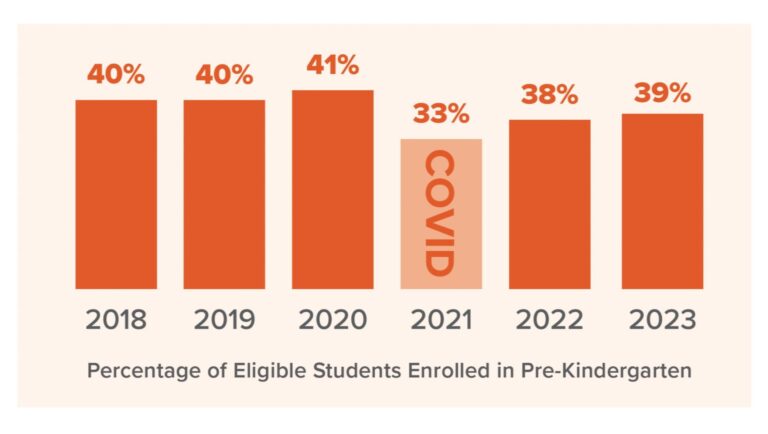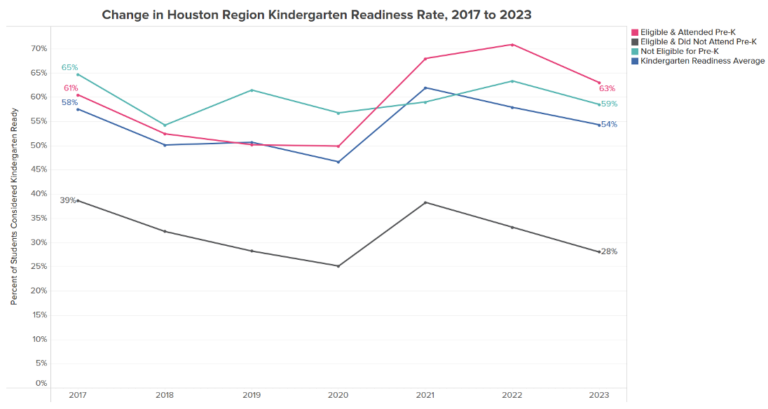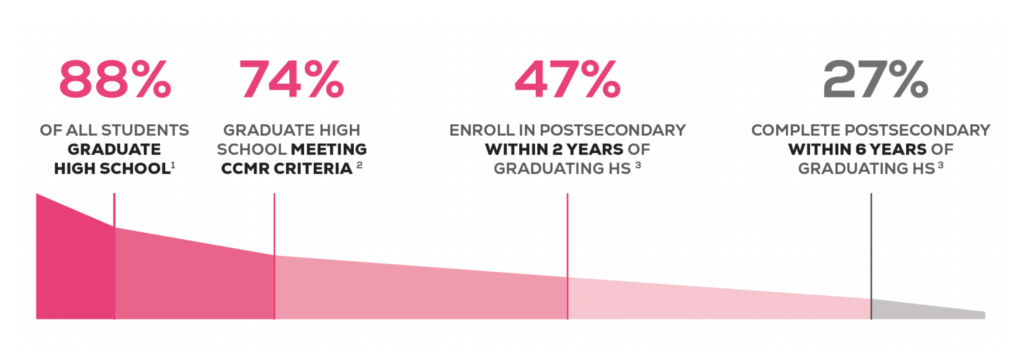HOUSTON – November 5, 2024 – Houston voters have demonstrated that they value education and believe in the future of our city’s children by approving the Houston ISD bond. Good Reason Houston is inspired by this outcome, as it affirms that every child in every neighborhood deserves access to safe, healthy, and world-class learning environments.
“Houstonians have spoken: investing in education is investing in the future of our children and our city. This vote is a powerful statement that every child, in every neighborhood, deserves a safe, healthy, and inspiring place to learn. By choosing to support this bond measure, our community has demonstrated that they believe in giving students and educators the resources they need to succeed. At Good Reason Houston, we are proud to stand alongside Houstonians who are committed to building a stronger, brighter future for our city. Together, we look forward to realizing this vision by working with our schools to ensure these resources bring lasting impact, fostering an environment where every student can thrive and succeed in the Houston of tomorrow.”
“Our future – our children’s future and our city’s future – depends on the resources we provide students today,” said Cary Wright, CEO of Good Reason Houston. “Houstonians showed children that investing in education is critical. Together, we are committed to ensuring students have the tools they need to thrive in the Houston of tomorrow.”
Both propositions passing is an example of the community’s commitment to public education as a foundation for a stronger, more prosperous city. Good Reason Houston will continue its work to support educational equity and resources for all students.
Good Reason Houston is excited to announce the release of its 2024 Houston Area Public Education Snapshot! Each year, the Snapshot offers an overview of key indicators that shape a student’s journey through Houston’s public schools. From access to quality pre-K to earning a postsecondary credential, these measures are vital to ensuring Houston students are equipped for success.
As a subscriber to our monthly ConnectED newsletter, you’re receiving an exclusive first look at this report before its official release.
This year’s Snapshot will walk you through regional progress along the following indicators:
Pre-Kindergarten Enrollment: What percentage of our 3- and 4-year-olds eligible for free public pre-K are enrolled in a public pre-K program?
Academic Achievement: How well are our schools ensuring that students meet grade level standards in reading and math?
College, Career, or Military Readiness: How prepared are high school graduates for their desired postsecondary paths after high school?
Postsecondary Credential Attainment: What proportion of our high school graduates attain postsecondary credentials within six years of high school graduation?
Explore the Snapshot here for a critical view of how our region’s public school system is preparing students to thrive. Together, let’s understand the impact today’s education has on building a brighter, more prosperous future for Houston.
If you have questions or thoughts on the work highlighted here, feel free to reach out to us at info@goodreasonhouston.org, reply to this email, or connect with us on social media using #HTXConnectEd.

The Gist:
Below are key takeaways from this month’s Houston ConnectEd.
Overall, HISD students were 3 points less likely on STAAR math and 1 point less likely on STAAR reading to score Did Not Meet in 2024 than in 2023.
The most substantial improvements happened at the first cohort of NES campuses, which saw a 9-point drop in students scoring Did Not Meet in math and a 3-point drop in reading.
Looking at particular student groups, Black, Hispanic, and economically disadvantaged students at NES campuses saw even larger gains, especially in math.
Keep reading for a comprehensive perspective on Houston public education data.
2024 STAAR “Did Not Meet” Results in HISD
Over 46,000 3- and 4-year-olds eligible for free public pre-K were not enrolled in a public pre-K program in 2023.
Regionwide, schools continue making strong progress on reading, but math achievement remains well below pre-pandemic levels.
About three-quarters of 2023 high school graduates in the Houston region graduated college, career, or military ready, the highest level since at least 2017.
However, only 27% of 2017 graduates attained a postsecondary credential within six years of high school graduation.
Keep reading for a comprehensive perspective on Houston public education data.
Houston Region Public Education Snapshot
Along with these positive changes, a slightly higher proportion of students at non-NES campuses scored at the Did Not Meet level in both math and reading in 2024 than the previous year, so this is a trend to monitor in future years.
PRE-KINDERGARTEN ENROLLMENT
In Texas, school districts are required to provide free, full-day pre-K to eligible 4-year-old students, with the option to offer programming for eligible 3-year-olds. Pre-K enrollment among eligible students in the Houston region declined during the COVID-19 pandemic and has yet to recover. In 2023, over 60% of eligible 3- and 4-year-olds were not enrolled in public pre-K, representing more than 46,000 children.

Pre-K plays a vital role in promoting early literacy and numeracy. Our analysis of kindergarten readiness data shows that students in the Houston region who were eligible for and attended free public pre-K were more than twice as likely to be kindergarten-ready as those who were eligible but did not attend. In fact, eligible students who attended public pre-K were more likely to be kindergarten-ready than non-eligible kindergartners, who tend to come from more advantaged backgrounds.

HISD’s 2024 STAAR results show mostly encouraging signs when it comes to ensuring fewer students are scoring Did Not Meet, particularly at NES campuses and especially in math. Still, we should all continue to closely monitor performance given the lack of progress at non-NES campuses and the lack of improvement for EB students in reading across the district. Efforts must be made this school year to sustain and expand upon the growth as we look towards 2025 STAAR results.
STUDENT ACHIEVEMENT
Academic achievement, as measured by Texas’s annual STAAR exams, is improving in reading across the Houston region, while math proficiency remains well below pre-pandemic levels. Overall, 49% of students met grade-level standards in reading, and 39% met them in math.

However, overall achievement levels mask significant variation across student groups. As shown below, while 49% of students met grade-level standards in reading, Black, Hispanic, economically disadvantaged, emergent bilingual, and special education students all scored significantly below that benchmark.

CCMR and POSTSECONDARY COMPLETION
In 2023, 76% of Houston-region graduates were considered college, career, or military ready (CCMR) at graduation, surpassing the previous high of 71% in 2019. This progress is encouraging, and should be monitored in future years as Texas raises CCMR standards to better align with metrics linked to postsecondary success.
However, a Good Reason Houston analysis of postsecondary enrollment and completion found a concerning lack of progress in credential attainment between the classes of 2012 and 2017. Only 27% of 2012 graduates earned a credential within six years of high school, and that figure remained unchanged for 2017 graduates. College enrollment has also declined, with just 47% of the class of 2022 enrolling within two years of graduation, compared to 61% of the class of 2017.

This original research into the postsecondary success of Houston-region graduates is part of a long-term study by Good Reason Houston. The study not only examines how graduates are performing but also seeks to identify the K-12 experiences most aligned with postsecondary success. The first phase of the study updates publicly available data on postsecondary enrollment and completion. To learn more, see April’s ConnectEd newsletter.
We are excited to announce the release of our full research brief on the first phase, coming in November.
The second phase dives deeper into how students’ K-12 experiences align with college enrollment, credential attainment, and living wage outcomes. If you’re interested in how advanced coursework, career and technical education participation, or STAAR scores predict long-term success, stay tuned this fall!
Data in the News
Here are some of the education data stories we’ve been keeping our eye on over the past few weeks.
School districts are divided over most recent lawsuits blocking release of state A-F accountability ratings: Last year, dozens of school districts across Texas successfully challenged the release of the state’s 2022-2023 A-F accountability ratings. This year, a different lawsuit filed by far fewer districts has similarly delayed the release of the 2023-2024 ratings. However, unlike last year, many districts across the state—including Houston ISD—have voluntarily released their unofficial ratings. As Dallas ISD Superintendent Stephanie Elizalde stated, “I feel like I owe it to our community, and, frankly, to the state of Texas to say, ‘Here is where we are.’”
Denver’s controversial school reforms led to significant learning gains for students: In the late 2000s and early 2010s, Denver Public Schools undertook some of the most significant system-wide reforms in the United States. A new study from CU Denver found that students who experienced two years of reform received the equivalent of six months to two years of additional schooling, while those who experienced five years of reform received the equivalent of two to three years. However, the study also highlighted the complexities of changing large systems, as some reforms led to negative student outcomes.
Focused, flexible advising model boosts community college retention and credential completion: High student attrition and low completion rates have long plagued community colleges. Encouragingly, a new study from the National Student Clearinghouse Research Center found that the proportion of students leaving college has fallen at community colleges, while departures from four-year institutions have increased. The study credits the innovative “guided pathways” advising model—which focuses on individualized, direct pathways to credentials—with driving progress at community colleges. This shift in focus from enrollment to completion is a positive development in promoting long-term student success.


